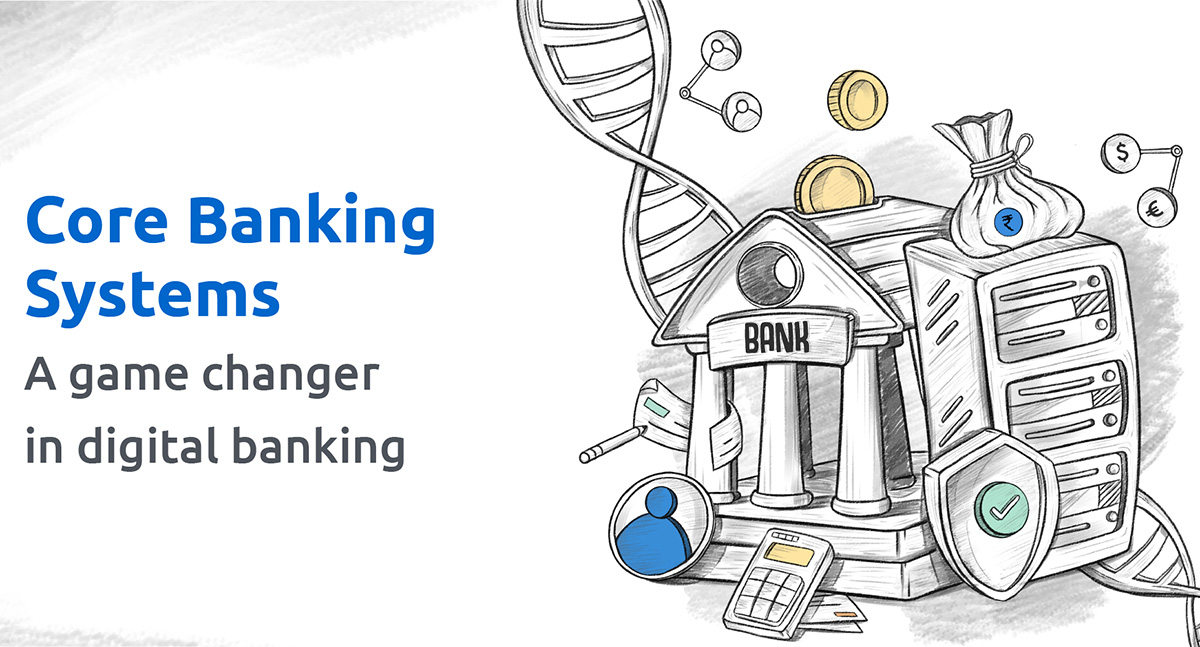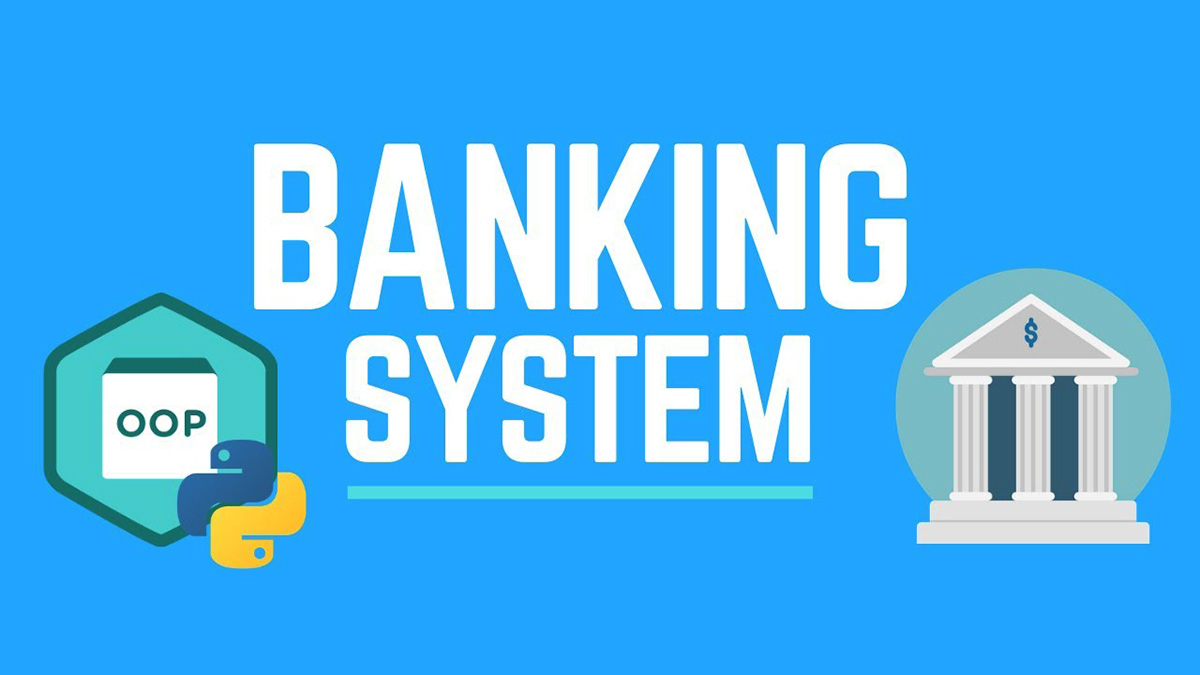

Finance
What Is Core Banking System
Published: November 2, 2023
Learn what a Core Banking System is and how it impacts the world of finance. Gain insights into its functions, benefits, and importance in the financial industry.
(Many of the links in this article redirect to a specific reviewed product. Your purchase of these products through affiliate links helps to generate commission for LiveWell, at no extra cost. Learn more)
Table of Contents
Introduction
In the modern era of technology-driven banking, financial institutions continually strive to optimize their operations and provide seamless services to their customers. One crucial aspect of achieving this is the implementation of a Core Banking System. The Core Banking System acts as the backbone of a bank’s operations, integrating various functions and providing a centralized platform for managing customer accounts, transactions, and other essential banking activities.
A Core Banking System is a comprehensive software solution designed to streamline banking operations, enhance customer experiences, and improve operational efficiency. It facilitates real-time processing of transactions, ensures data integrity, and enables banks to offer a wide range of banking services through multiple channels, including online banking, mobile banking, and ATMs.
The advent of Core Banking Systems revolutionized the banking industry by replacing traditional, fragmented systems with centralized platforms. These systems are built with advanced technologies, such as cloud computing, data analytics, and artificial intelligence, allowing banks to adapt to changing market dynamics and offer innovative financial products and services to their customers.
In this article, we will delve deeper into the definition of a Core Banking System, explore its components, highlight its functions, discuss the benefits it offers, and shed light on the challenges faced in implementing such systems. We will also provide examples of prominent Core Banking System providers in the market.
By the end of this article, you will gain a comprehensive understanding of how Core Banking Systems shape the modern banking landscape and why they are crucial for financial institutions seeking to stay competitive in a digitally driven world.
Definition of Core Banking System
A Core Banking System is a centralized software solution that serves as the heart of a financial institution’s operations. It encompasses a collection of interconnected modules and databases that enable a bank to manage its various banking activities efficiently. This system acts as a repository for all customer data, financial transactions, and other critical information, providing a unified view of the bank’s operations.
At its core, a Core Banking System is responsible for processing transactions, maintaining customer accounts, managing deposits and withdrawals, and providing a platform for other essential banking functions. It enables seamless integration between various banking channels, including branches, online banking, mobile banking, and ATMs, ensuring consistent and convenient service for customers.
One of the key features of a Core Banking System is its ability to provide real-time transaction processing and online access to customer accounts. This allows customers to view their account balances, initiate fund transfers, make payments, and perform other banking activities through secure channels.
Furthermore, a Core Banking System facilitates automation of routine banking tasks, such as generating account statements, calculating interest, and managing loan applications. It provides a comprehensive suite of tools for risk management, compliance monitoring, and reporting, ensuring that the bank operates within regulatory guidelines.
Additionally, a Core Banking System enables customization and scalability according to the needs and size of the financial institution. Banks can configure the system to meet their specific requirements, integrate new features, and expand their operations seamlessly.
In summary, a Core Banking System is a crucial component of a bank’s infrastructure, enabling efficient management of customer accounts, transactions, and other banking activities. It acts as a centralized hub that connects various channels and modules within the bank, ensuring seamless operations and enhancing the customer experience.
Components of Core Banking System
A Core Banking System is comprised of several key components that work together to support the operations of a financial institution. These components are designed to facilitate seamless integration, efficient data management, and robust functionality. Here are the fundamental components of a Core Banking System:
- Account Management: This component is responsible for managing customer accounts, including account opening, account maintenance, and account closure. It ensures accurate recording of customer details, balances, and transaction history.
- Transaction Processing: The transaction processing component handles the execution of various types of transactions, such as deposits, withdrawals, fund transfers, and bill payments. It ensures real-time processing, data integrity, and secure communication between internal and external systems.
- Customer Relationship Management (CRM): The CRM component focuses on managing and nurturing relationships with customers. It provides tools for customer profiling, customer segmentation, and customer service management. This component enables banks to understand their customers better and offer personalized products and services.
- Risk Management: The risk management component is responsible for monitoring and mitigating risks associated with banking operations. It includes features such as fraud detection, anti-money laundering (AML) checks, credit risk assessment, and compliance monitoring. This component helps maintain the security and integrity of the banking system.
- Reporting and Analytics: This component generates various reports and provides analytical insights into the bank’s operations. It enables banks to track key performance indicators (KPIs), analyze customer behavior, identify trends, and make informed business decisions.
- Integration and Interfaces: The integration and interfaces component enables seamless connectivity between the Core Banking System and other systems, such as payment gateways, external service providers, and regulatory systems. It ensures smooth data exchange and interoperability.
- Channel Management: The channel management component handles the integration and management of various banking channels, including branches, online banking portals, mobile apps, and ATMs. It ensures consistent and secure access to banking services through multiple touchpoints.
These components work in tandem to provide a holistic and integrated approach to managing the core banking functions of a financial institution. Each component plays a vital role in streamlining operations, enhancing customer experiences, and driving business growth.
Functions of Core Banking System
A Core Banking System performs a wide range of functions that are vital for the smooth operation of a financial institution. These functions span across various areas of banking operations and are designed to streamline processes, enhance customer experiences, and improve efficiency. Here are the key functions of a Core Banking System:
- Account Management: The Core Banking System is responsible for managing customer accounts. It enables account opening, maintenance, and closure, allowing banks to efficiently handle customer records, balances, and transactions.
- Transaction Processing: One of the essential functions of a Core Banking System is transaction processing. It ensures the smooth execution of various types of transactions, including deposits, withdrawals, fund transfers, bill payments, and foreign exchange. Real-time processing and secure communication channels enable quick and accurate transaction settlements.
- Customer Relationship Management (CRM): The CRM function focuses on managing and enhancing customer relationships. It provides tools for customer profiling, segmentation, and targeted marketing campaigns. With the help of a Core Banking System’s CRM module, banks can understand their customers better and provide personalized services, enhancing customer satisfaction and loyalty.
- Product Management: The Core Banking System enables banks to manage their wide range of products and services efficiently. It allows for the creation, customization, and pricing of various financial products, such as loans, savings accounts, credit cards, and investment products. Product management functionality ensures accurate product information, pricing, and availability across different banking channels.
- Risk Management: Managing risks is a critical function of a Core Banking System. It incorporates features to detect and mitigate potential risks, such as fraud detection, anti-money laundering (AML) checks, credit risk assessment, and regulatory compliance monitoring. By integrating risk management capabilities, the system enhances the security and integrity of banking operations.
- Reporting and Analytics: The Core Banking System provides comprehensive reporting and analytics features. It generates various reports, dashboards, and analytics tools to monitor key performance indicators (KPIs), track financial performance, analyze customer behavior, and make data-driven decisions. This function enables banks to gain insights into their business and identify opportunities for improvement.
- Channel Management: A Core Banking System allows banks to manage multiple banking channels, such as online banking, mobile banking, branch banking, and ATMs. It ensures consistent and seamless experiences for customers across these channels by providing secure access to services, transaction history, and account information.
These functions work together to create a robust and comprehensive banking system. By leveraging a Core Banking System’s functionalities, financial institutions can optimize their operations, optimize customer experiences, and stay competitive in the dynamic banking industry.
Benefits of Core Banking System
The implementation of a Core Banking System offers numerous benefits to financial institutions, enabling them to streamline operations, enhance customer experiences, and stay competitive in the digital banking landscape. Here are some key benefits of adopting a Core Banking System:
- Improved Operational Efficiency: A Core Banking System centralizes and automates various banking processes, reducing manual efforts and eliminating redundancies. It enables real-time transaction processing, improves data accuracy, and facilitates quicker response times. This results in improved operational efficiency, reduced costs, and increased productivity for financial institutions.
- Enhanced Customer Experience: With a Core Banking System, banks can offer seamless, personalized, and convenient banking experiences to their customers. Customers can access their accounts, make transactions, and access banking services through multiple channels, including online banking and mobile apps. The system also facilitates faster processing of customer requests, leading to higher customer satisfaction.
- Streamlined Operations: Core Banking Systems integrate various banking functions and departments, eliminating silos and promoting better collaboration. This streamlines internal operations, reduces complexities, and enhances process efficiency. Banks can efficiently manage customer accounts, track transactions, and generate reports from a unified platform.
- Scalability and Flexibility: A Core Banking System is designed to be scalable and flexible, enabling banks to adapt to changing business needs and market demands. Financial institutions can easily add new products and services, expand their operations, and integrate with new technologies. This agility enables banks to stay ahead in a competitive market and cater to evolving customer preferences.
- Compliance and Risk Management: Core Banking Systems incorporate risk management and compliance features to ensure adherence to regulatory guidelines. Banks can perform anti-money laundering (AML) checks, monitor fraud, and maintain data integrity. This helps in minimizing risks, safeguarding customer data, and complying with industry regulations.
- Data-driven Insights: The reporting and analytics capabilities of a Core Banking System provide banks with valuable insights into their operations and customers. Banks can track key performance indicators (KPIs), analyze customer behavior, and identify trends. These data-driven insights empower banks to make informed decisions, create targeted marketing campaigns, and identify business opportunities.
- Integration with Third-party Systems: Core Banking Systems offer seamless integration with external systems and services. Banks can connect with payment gateways, credit bureaus, and other service providers, enhancing their service offerings. This integration enables customers to make payments, access credit information, and utilize other value-added services from within the banking system.
Overall, the adoption of a Core Banking System brings about significant operational efficiencies, improved customer experiences, and better risk management for financial institutions. It enables banks to stay competitive, drive growth, and serve customers more effectively in the rapidly evolving banking landscape.
Challenges of Implementing Core Banking System
While implementing a Core Banking System can offer numerous benefits, financial institutions also face certain challenges during the implementation process. It is essential to be aware of these challenges to ensure a smooth and successful transition. Here are some common challenges of implementing a Core Banking System:
- Complexity: Implementing a Core Banking System can be complex and time-consuming due to the integration of multiple modules and the need to migrate large volumes of data. Banks must establish clear project objectives, develop a detailed implementation plan, and allocate sufficient resources to manage the complexity effectively.
- Data Migration: The migration of a bank’s existing data to the new Core Banking System can be a major challenge. Ensuring the accuracy and integrity of customer data during the migration process requires meticulous planning, data cleansing, and thorough testing to avoid any disruption or loss of critical information.
- Legacy System Integration: Financial institutions often have legacy systems that need to be integrated with the new Core Banking System. The integration process can be complex, as legacy systems may have outdated technology, incompatible data formats, or unique business rules. Overcoming these integration challenges requires careful analysis, system mapping, and the development of appropriate middleware or interfaces.
- Change Management: Implementing a Core Banking System involves significant changes to organizational processes, workflows, and employee roles. Change management becomes crucial to ensure that employees are properly trained, understand the new system’s functionalities, and adapt to the new way of working. Adequate communication, training programs, and stakeholder engagement are essential for successful change management.
- Budgetary Constraints: Implementing a Core Banking System can be a substantial financial investment. Financial institutions must carefully plan and allocate budgets for software licenses, hardware infrastructure, implementation services, training, and ongoing maintenance and support. It’s crucial to strike a balance between cost considerations and the desired functionality of the Core Banking System.
- Vendor Selection: Choosing the right Core Banking System vendor is critical to the success of the implementation. Financial institutions must thoroughly evaluate vendors based on factors such as their experience in the industry, track record of successful implementations, system capabilities, scalability, and ongoing support. Making the right vendor selection requires careful due diligence and consultation with industry experts.
- Operational Disruptions: During the implementation phase, financial institutions may experience temporary disruptions in their day-to-day operations. It’s essential to have thorough testing, backup plans, and contingency measures in place to minimize potential disruptions and ensure uninterrupted customer service.
By proactively addressing these challenges, financial institutions can mitigate risks and increase the likelihood of a successful implementation. Careful planning, effective change management, partnership with experienced vendors, and ongoing support play vital roles in overcoming these challenges and reaping the benefits of a Core Banking System.
Examples of Core Banking System Providers
Several technology companies and software vendors specialize in providing Core Banking Systems for financial institutions. These vendors offer comprehensive solutions that cater to the specific needs of banks and enable them to effectively manage their operations. Here are a few examples of prominent Core Banking System providers:
- Oracle Financial Services: Oracle Financial Services provides a comprehensive Core Banking System known as Oracle FLEXCUBE. This platform offers a wide range of functionalities, including account management, transaction processing, risk management, and channel management. It supports multi-currency operations, real-time processing, and integration with external systems. Oracle FLEXCUBE is used by banks of various sizes globally.
- FIS: FIS offers a Core Banking System called FIS Profile. It is a scalable and flexible solution that caters to the needs of banks of all sizes, from community banks to large financial institutions. FIS Profile provides features such as account management, payment processing, lending management, and analytics. It also supports multi-channel banking and integration with other essential banking systems.
- Temenos: Temenos offers a Core Banking System called Temenos Transact. It is a comprehensive, cloud-native solution designed for both retail and corporate banking. Temenos Transact provides features such as customer onboarding, account management, transaction processing, risk management, and compliance. It also offers open banking capabilities and integration with third-party systems through its Temenos MarketPlace.
- Finastra: Finastra provides a Core Banking System called Fusion Essence. It is a flexible and scalable solution that caters to the diverse needs of financial institutions. Fusion Essence offers features such as customer relationship management, product management, transaction processing, risk management, and analytics. It supports open banking initiatives and enables banks to deliver personalized experiences to their customers.
- Infosys Finacle: Infosys Finacle is a widely-used Core Banking System employed by numerous banks globally. It offers a comprehensive suite of functionalities, including account management, transaction processing, product management, risk management, and channel management. Infosys Finacle supports real-time processing, multi-currency operations, and integration with various external systems.
These are just a few examples of Core Banking System providers in the market. Financial institutions have a wide range of options to choose from based on their specific requirements, size, and target market. It is crucial for banks to thoroughly evaluate each vendor’s offerings, features, track record, and customer reviews to make an informed decision.
Disclaimer: The examples provided in this section are for informational purposes only and do not constitute an endorsement of any particular vendor or product.
Conclusion
A Core Banking System is a critical component for modern financial institutions looking to optimize operations, enhance customer experiences, and stay competitive in the digital banking era. It provides a centralized platform for managing customer accounts, processing transactions, and performing essential banking functions.
Throughout this article, we have explored the definition of a Core Banking System, its components, functions, benefits, challenges, and examples of prominent providers. We have learned that a Core Banking System offers benefits such as improved operational efficiency, enhanced customer experiences, streamlined operations, and scalability.
However, implementing a Core Banking System also comes with challenges such as system complexity, data migration, legacy system integration, change management, budgetary constraints, vendor selection, and potential operational disruptions. Financial institutions need to be prepared to address these challenges through proper planning, effective change management, careful vendor selection, and ongoing support.
By leveraging a Core Banking System, financial institutions can streamline their operations, offer personalized services, and gain valuable insights into their business and customers. These systems empower banks to stay ahead of the curve, adapt to market changes, and deliver seamless and convenient banking experiences to their customers.
In conclusion, a Core Banking System is not just a software solution; it is a strategic investment that enables financial institutions to meet the evolving needs of their customers, drive business growth, and thrive in the competitive banking landscape. With the right implementation strategy and careful consideration of the challenges and benefits, financial institutions can unlock the full potential of a Core Banking System and transform their banking operations for the better.














